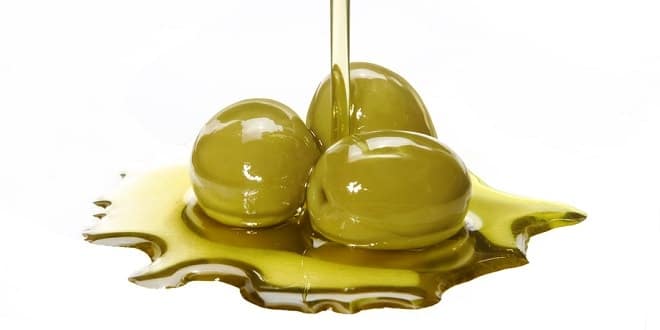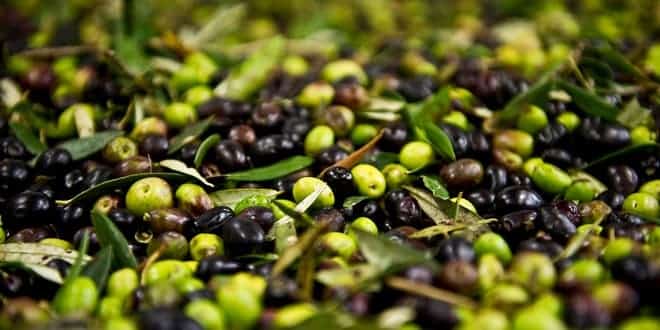Olive Fermentation Presentation
•OLIVE FERMENTATION
•The main use of raw olives, is as olive oil—
•more than 90% of the total worldwide olive production is used for oil
•7% to 10% are consumed as table olives.
•Currently, four countries— Italy, Spain, Greece, and Turkey —are responsible for 75% of the total worldwide olive production (9-15 billion Kg)
•Four fundamental types have been established;
•-green
•-turning color
•-natural black
•( for these types they refer to color of fruit as a raw material, color does not change during processing)
•-black ( harvested as turning color and turns to black during oxidation in an alkaline during processing)
•Bitterness of fruit can be eliminated completely and quickly by alkaline hydrolysis, sodium hydroxide solutions prior to fermentation and by storage in brine or dry salt.
•Olive fruit
•Pulp 70-90 %
•Stone 9-27 %
•Seed 1-3 %
•Pulp %
•Moisture 50-75
•Oil 6-30
•Soluble reducing sugar 2-6
•Soluble non-reducing sugar 0.1-0.3
•Crude protein 1-3
•Fiber 1-4
•Ash 0.6-1
•Others 6-10
•Major soluble sugars are glucose, fructose, sucrose, xylose and rhamnose .
•Also contains 0.5-1 % mannitol .
•Pulp contains 1-3 % tannic acid.
•Oleuropein: responsible for the bitterness.
Catechol oxidase: enzyme responsible for the color change of fruit from green to brown.
•Fermentation tanks are used to be wood but not now.
•Concrete tanks are still in use ( height should be less than 2.5 m to eliminate pressure problems on olives).
•Concrete tanks should be painted with synthetic paints or covered with polyesters.
•Polyester and fiber glass tanks are the best ones and nowadays commonly used.
•Underground fermentation tanks
•Spanish style pickled green olives in brine
(1/3 of all production, lactic ferm. is fundamental)
The fruits are picked( firm and light green)
–Starting phase:
–Alkaline (1.3-2.6 % w/ v NaOH, 6-10 h, 28 C )
–Hydrolysis of oleuropein and formation of organic acids from sugars.
•Fresh, green olives stay in the lye 9 to 12 h.
Test the penetration of the lye: Use phenolphthalein indicator
The penetrated part: : bright magenta
the acidic flesh: near the stone will still be white.
the olives are washed , to remove the lye. ( pH 8 % salt necessary.
•Pasteurization to promote extended shelf-life is optional.
•Natural black olives in brine( Greek Method):
•( 1/3 of all production, Yeast dominates and minor lactic fermentation).
• naturally ripe, fully matured and dark-purple fruits
•differences between Greek-style and other olive types.
•1- naturally black when they are harvested ( California-style black olives rely on oxidation to generate black pigments.)
•2- Greek-style olives are not lye-treated,( more bitter flavor).
•3- the fermentation by lactic acid bacteria, yeast, non-lactic acid bacteria .
•Starting phase : No starting phase.
Main phase
•non-lactic organisms (Pseudomonas, Enterobacteriaceae) exist in the brine, for several weeks. ( so includes lactic, acetic, citric, malic acid, CO2, and ethanol.
Lower brine concentrations (5% to 10%) may contribute to the more diverse flora that develop in these olives.
•Fermentation in brine.( 6 % salt, concrete tanks lined with paraffin or epoxy resins).
•Yeast predominate ( Candida, Pichia, Kleockera , Torulopsis, Deboramyces)
• Lactic acid bacteria present ( if salt con. 0.6 % L. acid ) color will be lighter ( Similar to black olives treated with alkaline , it is not desired.)
•Final pH is 4.5-4.8, salt concentration is > 10 %
•After fermentation is completed, it exposed to air to oxidize to improve skin color.
Final phase
• Conservation in brine.
Antifungal treatment:
sorbic acid 0.075% is the most efficient preservative
0.075% benzoic acid
0.032% calcium proprionate.
Pickled black (ripe black ) olives in brine
( American, Californian, style)
Straw-yellow to cherry-red olives are graded according to color and size to insure uniform lye penetration
•Alkaline treatment ( 1-3 % NaOH )
•place into water,
•inject air under pressure to oxidize polyphenolic compounds for complete blackening of the skin
•wash several times
•add 0.1 % iron gluconate to last wash water to stabilize color
•put in to brine ( 3 % salt )
•bottled in tin cans or glass bottles
•sterilize (116 C for 1 hr)
•Final pH: 5.8-7.9, salt 2-3 %
Some Turkish style olives produced
•Gemlik style black olive production :
•Harvest olives: skin is black and pulp is purple,
•If it is going to be stored longer than 14 h keep it in a solution ( of 0.67 % L acid, 1 % acetic acid, 0.03 % sodium benzoate, and 0.3 % potassium sorbate .)
•washing ( 2-3 days)
•Put them into fiber glass tanks ( 10 tons)
•add brine solution 10 % salt,
•0.15 g/kg iron gluconate or iron oxalate to improve color,
•1 % inoculum L. plantarum
•first two months adjust salt conc. to 10 %
•Fermentation temperature is approximately 20 C.
•Try to prevent contact of olives with air at the surface of tank.
•If sugar concentration is not sufficient add 0.5-1 % molasses during third or forth week of fermentation.
•Lactic acid concentration should be not less than 0.9 %.
•Prevent Mold growth on the surface, it uses lactic acid and product softens.
•( fermentation time is approximately 6 months ) –
•Fill cans under N2 or CO2 gas and pasteurize.
•low salt conc. for first 20 days then increase to 10 % , shorten fermentation time to 2-3 months.
Cut ( çizme) green olives
•Olives are cut from 2-4 place
•Put into 2-3 % salt solution ( no alkaline treatment)
Change its solution twice a day until bitterness is removed put into 8-10 % salt solution and 8-10 days of fermentation packaging ( in 5-8 % salt solution, 1 % citric acid, olive oil)
Olive produced in baskets ( sele zeytini)
•Ripe olives are placed in a basket as one layer olive and one layer dry salt until to the top of basket and covered with cloth
•turn these olives (olive release its water)
•in 3-4 weeks no bitterness left ( weight loss is 20-30 %, no air movement is wanted to prevent drying of olives)
•Wash
•pack and cover with olive oil
Hurma zeytin
•Single olive type that can be consumed immediately after harvest.
•( Grown at Urla and Karaburun: very small amount, economically it is not important )
• Mold ( Phomo olea) grows on the tree and it breaks down oleuropein, olive is not bitter when it is harvested.
DEFECTS IN OLIVE PICKLES
•1- Film formation on the surface of tanks( soft pickles):
•called kefeke in Turkish, especially during summertime. ( color of the film changes as White to green to red to finally gray).
•Mo of this film breaks down lactic acid, supports the growth of mo, breaks down pectin so olive softens.
•softening : if sufficient lactic acid is not produced or salt conc. is very low.
• breakdown of fatty acids: gives bitter taste( called yağlanma)
•To prevent film formation we should tightly close surface of the tank.
•2-Slime formation
• Due to low acid and salt, slime forming m.o grows ( brine should be changed)
•3-Darkening:
•Occurs in green olive pickles due to contact with air.
•iron contamination cause darkening by reacting with polyphenols and forming iron tannat.
•If darkening is not intense, keeping olives in 1-2 % H2SO4 solution can be helpful to remove dark color
•4-Air space formation: (blistering)
•Due to high temperature and high alkaline conc. air space forms just underneath the skin of olive.
…



